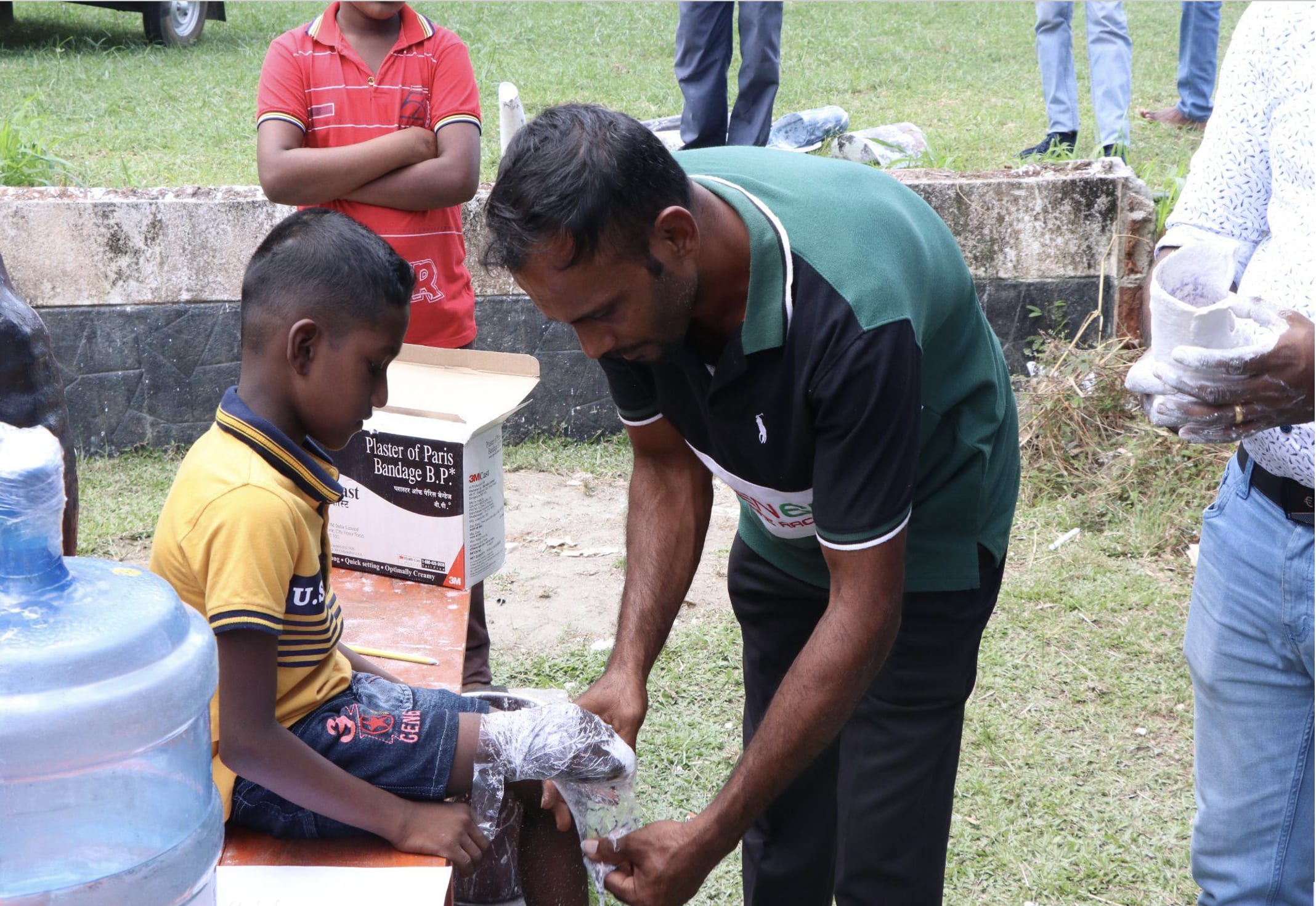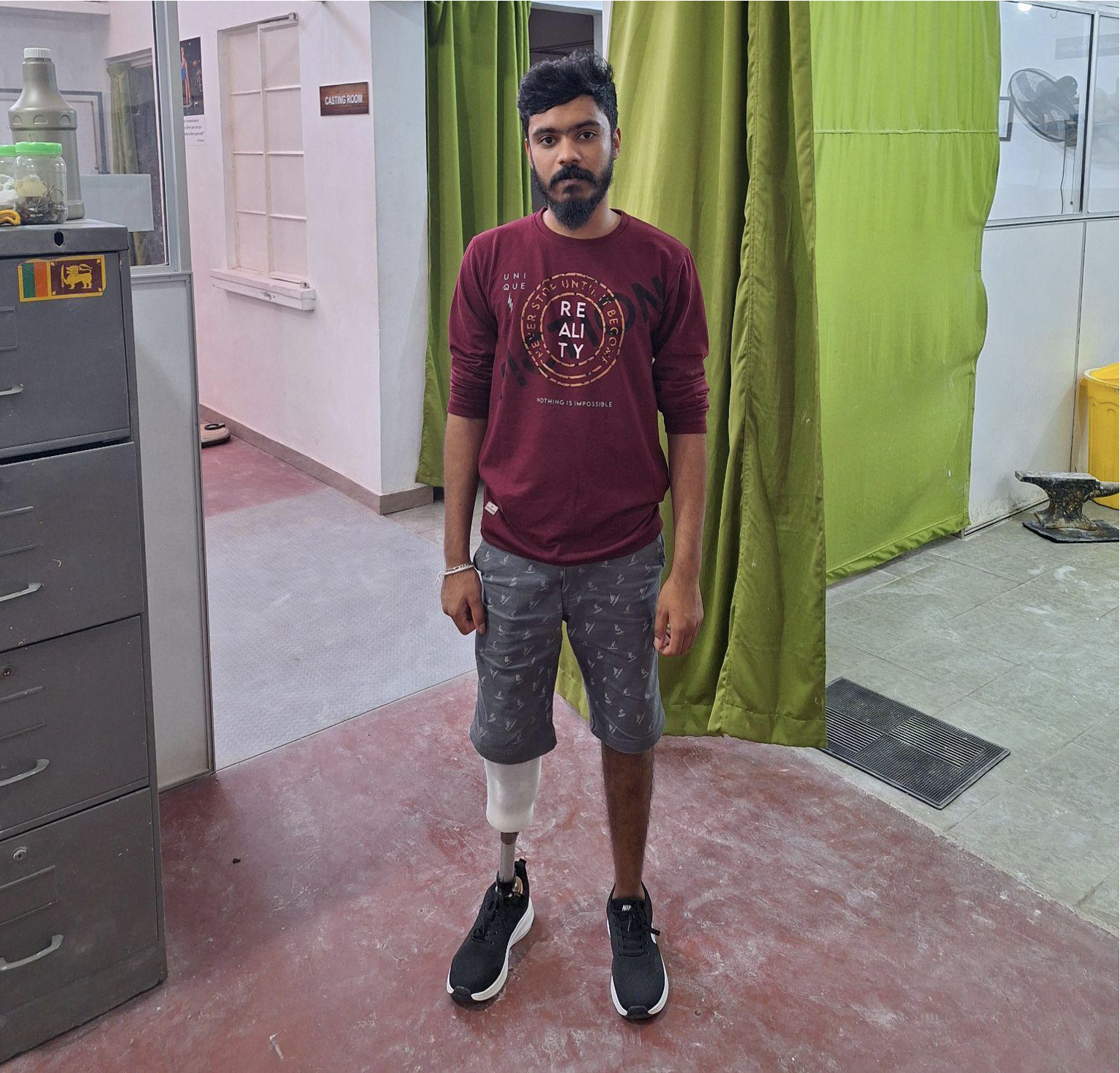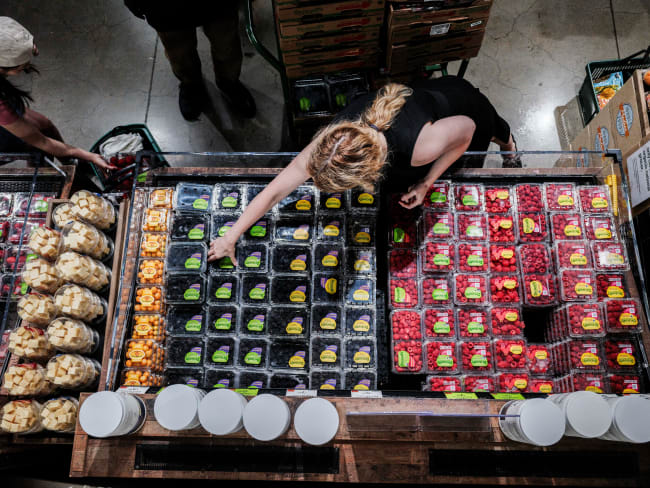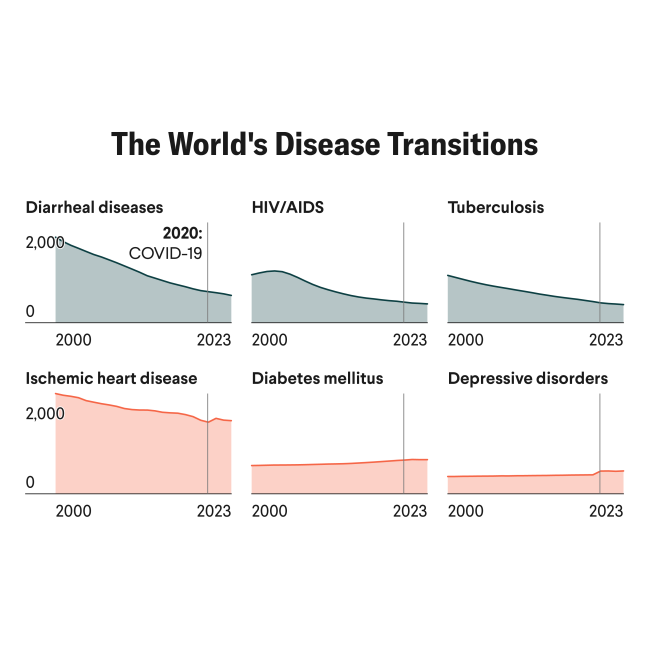The blackened calluses on his hands remind Kishan Kumar of the severe motorcycle crash in April 2023 that led to the amputation of his right leg below the knee.
For months after the accident, Kumar, 25, required crutches to walk, which left his palms bruised and callused. His search for a prosthetic took him to two private providers in Colombo, Sri Lanka's largest city. Both estimated a cost of around 500,000 Sri Lankan rupees ($1,600) for an artificial limb, he said, which is almost half what the average Sri Lankan earns in a year.
Sri Lanka is saddled with a long and traumatic history of amputations. Approximately 160,000 amputees lived in the country as of 2017, according to the U.S. Agency for International Development, or one in every 134 people. Injuries caused by decades of conflict were once the primary cause, but a scourge of diabetes ripping through the country has exacerbated the crisis.
Sri Lanka's diabetes epidemic and the soaring demand for prosthetic limbs are trends across most of the developing world, as is the reality that few amputees can afford replacements.
Less than a year after his accident, though, Kumar was able to walk again almost unaided. He credited his rehabilitation to a 3D-printed socket and prosthetic components recycled from the United States.
Sri Lanka's diabetes epidemic and the soaring demand for prosthetic limbs are trends across most of the developing world
Most of the components in Kumar's prosthetic started their journey in a storage unit in the Hell's Kitchen neighborhood of New York City. The unit, owned by the American nonprofit Penta Medical Recycling, is filled with secondhand artificial limbs from across the United States. The limbs can be disassembled into their modular parts before being shipped out to global partners. In Sri Lanka, limbs come to patients free of charge, thanks to the charity Colombo Friend-in-Need Society.
Preventing Sri Lanka's surge of diabetes cases and amputations might seem an impossible task. Options to improve amputee living standards, such as affordable artificial limbs, are now realities, however.
Historic Charities and Modern Solutions
In an unassuming central Colombo complex wedged between a crowded Buddhist temple and one of the city's most upscale malls, the ring of religious chants and clamor of shoppers die away in the halls of Sri Lanka's oldest charity.
The Colombo Friend-in-Need Society has aided Sri Lanka's physically disabled since 1831. Not only does it house patients while they practice how to walk on artificial limbs, but its technicians also handcraft prostheses for resident amputees.
They make most limbs the traditional way—with rubber, plaster, and chisels. But Devarajan Sivagnana Sundaram, the society's lone full-time prosthetist, spends most of his days in the society's lab tinkering with modular components, interchangeable pieces that can be reassembled into high-quality artificial limbs.
"The modular components we receive are very valuable," Sundaram said. "They let us help many more people."
A modular prosthetic leg can give patients more freedom of motion than rigid ones but can cost 600,000 Sri Lankan rupees (approximately $2,000) at a private clinic. The society can assemble an artificial limb for less than a sixth of this cost and without charging the patients, Sundaram said. He attributed the steep difference to a transformative recycling process using discarded but still high-quality prostheses from the United States.

In 2023, Penta shipped more than 2,200 individual components from its New York base to partners in 29 countries, including Sri Lanka. Since its first shipment to the South Asian island in 2020, Penta has sent Sri Lanka around 600 modular pieces.
"We like to call ourselves a logistical bridge between supply and demand, and in Sri Lanka, there is a very large demand for prosthetic components," said Anna Szczepanek, Penta's executive director.
In the United States, more than 300,000 prosthetic limbs are replaced each year, according to Penta's research. Many of these are built to last five years, but few U.S. doctors offer secondhand prostheses to patients, largely because of liability concerns, said Mijamin Strong, Penta's director of operations.
The U.S. glut of viable prostheses—many from returned or outdated models or deceased patients—can be a lifeline in countries like Sri Lanka. The design of modular components is largely standardized, so doctors like Sundaram can mix and match pieces made from different companies to suit their patients' needs, Szczepanek said.
The only unrecyclable component is the socket, a sleeve-like attachment that connects the prosthesis to the stump of a patient's residual limb.
An ill-fitting socket could damage skin or cause spinal injuries. Instead of recycling, Sundaram uses 3D scanners and printers to produce custom sockets. A 2023 partnership with Nia, a Canadian medical technology nonprofit, trains clinicians on how to take accurate scans of patients' residual limbs, then use 3D printers to craft bespoke sockets.
Uneven Odds
The Colombo Friend-in-Need Society has distributed more than 30,000 artificial limbs since 1985, many donated to injured soldiers and civilians during Sri Lanka's 26-year civil war, said Supem de Silva, a former president of the charity. Since the war ended in 2009, the leading cause of amputations has been illness, particularly adult-onset diabetes.
We like to call ourselves a logistical bridge between supply and demand, and in Sri Lanka, there is a very large demand for prosthetic components
Anna Szczepanek, Penta
Samanthi Asoka, 57, is a nurse who was diagnosed with diabetes last year. The disease worsened until a doctor was forced to amputate her right leg that July. She found her way to the society last winter, where she received a prosthetic replacement and gait training.
According to a study published in 2023 by collaborators at local universities and public health institutes, Sri Lanka had the highest rate of diabetes per capita in Asia, around one in four adults suffering from the disease.
Rising affluence since the end of the war and the growing popularity of sugar-rich diets are partly responsible, said Ravi Rannan-Eliya, lead author of the study and executive director of Sri Lanka's Institute for Health Policy, an independent research body.
Lifestyle might not be the only driver. A growing body of research has pointed to epigenetic changes as a cause. Epigeneticists study how environmental factors activate some genes and silence others, over time altering the way bodies read genetic signatures.
Diabetes Rises Steadily in Sri Lanka
Diabetes prevalence has grown in Sri Lanka because of higher incomes, lifestyle changes, and dietary shifts
"There may be an epigenetic effect that reflects environmental effects, particularly in southern South Asia," Rannan-Eliya said.
The region's history of undernourishment under colonial rule may have made genes starvation adapted. This can make humans resistant to insulin, the hormone that helps bodies break down sugar, which when lacking can trigger diabetes.
This trait, which studies have found to be inheritable, combined with sugary diets and sedentary lifestyles, could be magnifying diabetes risk in Sri Lanka, Rannan-Eliya said. Because epigenetic changes do not alter the structure of DNA, they can be reversed and eventually fade, but for now the odds are stacked against Sri Lanka to prevent the spread of the disease.
"If we understand this as an epigenetic problem, it will be harder for us to do anything about it than in another population," Rannan-Eliya said. "We might just have to accept that we will face two or three generations of higher diabetes risks."
Treating the Spread
Even though diabetes prevention is an uphill battle, treatment remains possible, as are measures to improve quality of life, such as affordable prostheses.
Sri Lanka's GDP and national income approximately doubled between 2009 (the end of the war) and 2020, but growth has not translated to a relative increase in health funding. When measured as a percentage of GDP, health funding has mostly stayed flat over the same period, according to World Bank statistics.
Sri Lanka's public health-care system has faced pressures in recent years from shrinking government receipts and an economic crisis brought on by the COVID-19 pandemic. Affordable prosthetic limbs are likely the kind of item to disappear first during periods of economic instability, Rannan-Eliya said, and preventive care for serious diabetes cases is not far behind.
Diabetic screening is particularly inaccessible for those living outside cities, but the Colombo Friend-in-Need Society is helping fill those gaps.
Regularly throughout the year, the society conducts mobile camps in Sri Lanka's countryside, reaching people with difficult access to hospitals and diabetes tests. At one camp last winter, held at a Buddhist temple deep in the island's central mountains, hundreds of Sri Lankans arrived in search of care.
Charitable action is not a long-term cure for dwindling government funding for health care, but it can play critical roles
Ravi Rannan-Eliya, Institute for Health Policy
"So many people here have lost limbs and don't know what to do. We are trying to come to them," said Russell Dandeniya, a former member of Sri Lanka's Rotary Club chapter, an international service organization that helps organize the camps.
The centerpiece of the mobile camps is a coach bus, which ferries equipment from Colombo and doubles as a makeshift doctor's office. Inside the refurbished bus, Sri Lankan Navy physicians administered vision tests to screen for diabetes. During the four-day camp, the society donated around 40 limbs and hundreds received screening, examinations, and free reading glasses.
Charitable action is not a long-term cure for dwindling government funding for health care, Rannan-Eliya explained. But it can play critical roles "at the margins," when medical necessities such as artificial limbs, screening, and treatment become unaffordable or inaccessible.
The limbs provided at mobile camps are made by hand, not with recycled or 3D-printed materials, given the sensitive environment needed for the latter. Back in Colombo, the functionality of recycled modular components is providing relief, mainly to young people like Kumar, who still feels life in both his legs.
"It's been a difficult few months," Kumar said on the day he was to be discharged from the society's care. "But right now, I'm just excited to walk again."













